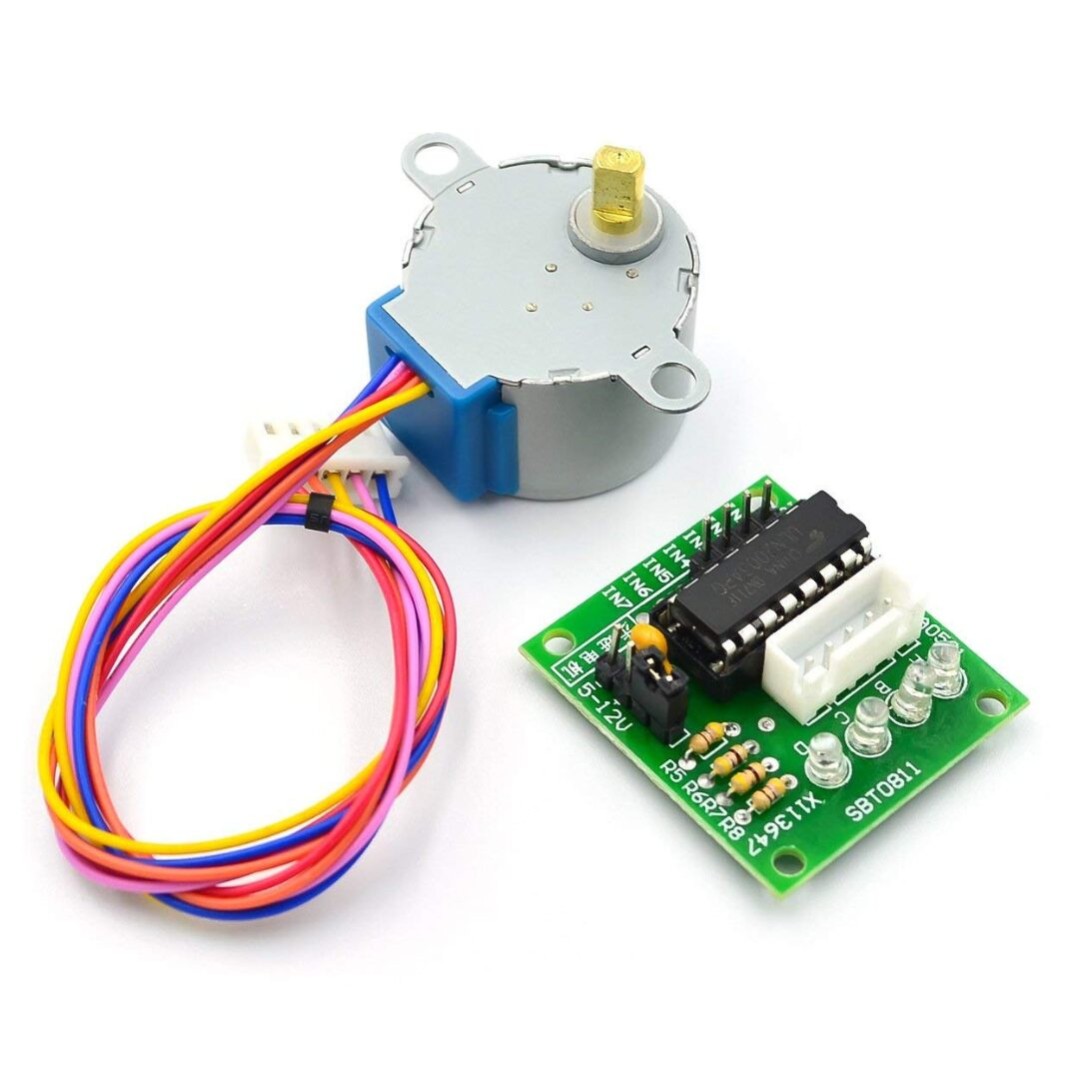

.jpeg&width=620&quality=80)


.jpeg&width=172&quality=80)


.jpeg&width=300&quality=80)
28byj-48 stepper motor and uln2003 stepper motor driver
The 28BYJ-48 is a popular, low-cost unipolar stepper motor, often used in hobbyist and beginner electronics projects. It is commonly used for applications like small robotics, or control systems like curtain or fan automation. This motor is often paired with the ULN2003 stepper motor driver module to control its operation.
₹ 160 ₹299
299



| Made In : | India |
Add FAQ
The 28BYJ-48 is a popular, low-cost unipolar stepper motor, often used in hobbyist and beginner electronics projects. It is commonly used for applications like small robotics, or control systems like curtain or fan automation. This motor is often paired with the ULN2003 stepper motor driver module to control its operation.
Overview of Components:
-
28BYJ-48 Stepper Motor:
- Type: Unipolar stepper motor
- Voltage: Typically 5V DC (though it can also work at 12V)
- Coils: It has 4 coils and 5 wires (including the common wire)
- Steps per Revolution: Typically 2048 steps per full revolution, but it can be reduced to 512 if using half-step driving.
-
ULN2003 Stepper Motor Driver:
- The ULN2003 is an integrated circuit that can drive up to 7 V or 50V DC loads, and is used to control the stepper motor by providing the necessary current to its coils.
- It has 7 Darlington transistor pairs that allow you to control the current through the coils of the stepper motor.
- It provides the current to the stepper motor in the right sequence, making it rotate as required.
- It is commonly paired with the 28BYJ-48 because it matches the motor's voltage and current requirements.
Wiring the 28BYJ-48 to ULN2003:
- 28BYJ-48 Motor Pins:
- Pin 1: IN1 (motor input)
- Pin 2: IN2 (motor input)
- Pin 3: IN3 (motor input)
- Pin 4: IN4 (motor input)
- Pin 5: Common pin (typically connected to the 5V supply)
- ULN2003 Driver Pins:
- Pin 1 (IN1): Control signal from the microcontroller (e.g., Arduino)
- Pin 2 (IN2): Control signal from the microcontroller (e.g., Arduino)
- Pin 3 (IN3): Control signal from the microcontroller (e.g., Arduino)
- Pin 4 (IN4): Control signal from the microcontroller (e.g., Arduino)
- Pin 9 (COM pin): Typically connected to the 5V power supply
- Pin 11-14 (Output pins): These are connected to the 28BYJ-48 motor’s pins to deliver the required current.
Simple Arduino Code to Drive the Stepper Motor:
Here’s a basic example using an Arduino to control the 28BYJ-48 stepper motor with the ULN2003 driver:
// Define the pins connected to the ULN2003 IN1, IN2, IN3, IN4
int motorPin1 = 8;
int motorPin2 = 9;
int motorPin3 = 10;
int motorPin4 = 11;
void setup() {
// Set the motor pins as output
pinMode(motorPin1, OUTPUT);
pinMode(motorPin2, OUTPUT);
pinMode(motorPin3, OUTPUT);
pinMode(motorPin4, OUTPUT);
}
void loop() {
// Step sequence for full-step rotation
digitalWrite(motorPin1, HIGH);
digitalWrite(motorPin2, LOW);
digitalWrite(motorPin3, LOW);
digitalWrite(motorPin4, HIGH);
delay(1000); // Adjust delay for speed
digitalWrite(motorPin1, LOW);
digitalWrite(motorPin2, HIGH);
digitalWrite(motorPin3, LOW);
digitalWrite(motorPin4, HIGH);
delay(1000);
digitalWrite(motorPin1, LOW);
digitalWrite(motorPin2, LOW);
digitalWrite(motorPin3, HIGH);
digitalWrite(motorPin4, HIGH);
delay(1000);
digitalWrite(motorPin1, HIGH);
digitalWrite(motorPin2, LOW);
digitalWrite(motorPin3, HIGH);
digitalWrite(motorPin4, HIGH);
delay(1000);
}
Key Considerations:
- Power supply: The 28BYJ-48 motor requires 5V to run. You can use the 5V supply from the Arduino or a separate 5V power source if needed.
- Speed: The motor speed can be controlled by adjusting the delay time in the code. A shorter delay increases speed, while a longer delay slows the motor down.
- Torque: The 28BYJ-48 motor has relatively low torque, so it's suitable for light-duty tasks.
Would you like to know more about controlling the motor or other uses for it?
0 Reviews For this Product





3.jpeg&width=225&quality=80)







